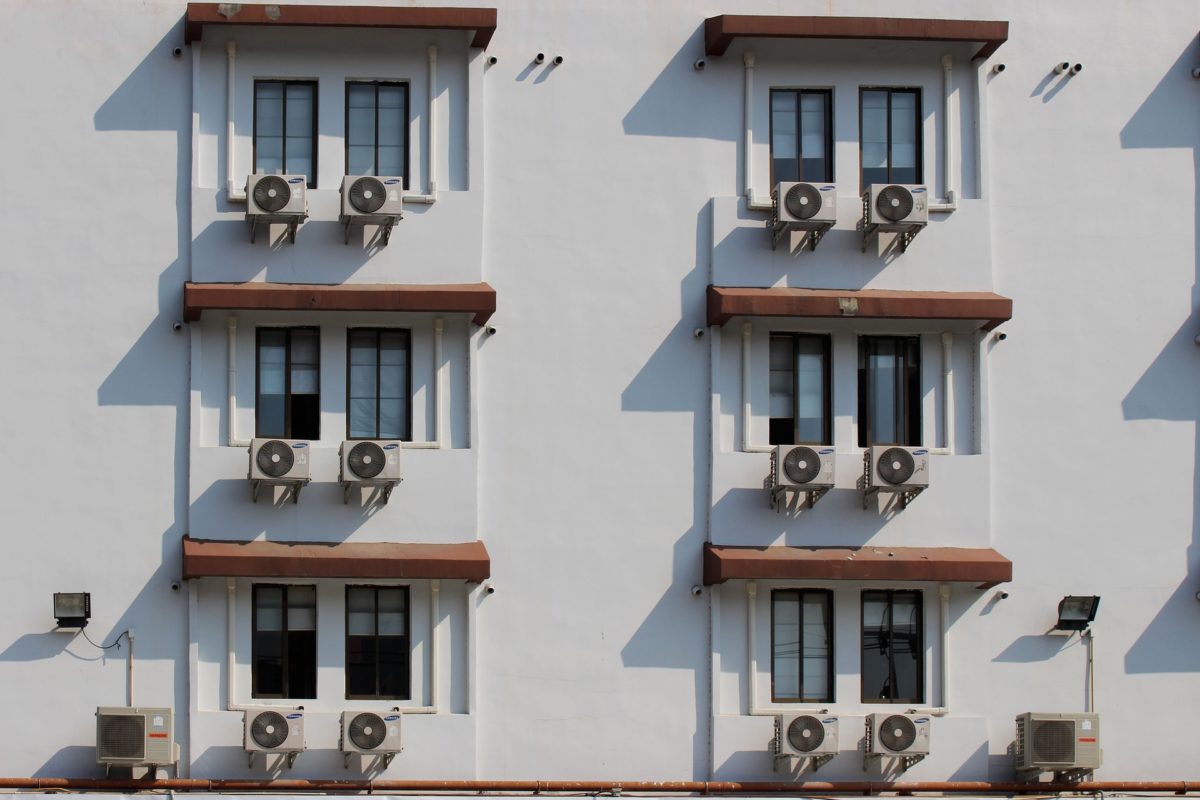With the U.S. Environmental Protection Agency recently suggesting 12% of global CO2 emissions come from refrigeration and air conditioning, a study led by researchers at Finland’s Aalto University has posited a solution: solar power and energy storage.
Finnish researchers collaborated with colleagues from MIT and the Singapore-MIT Alliance for Research and Technology to produce the Meeting global cooling demand with photovoltaics during the 21st century paper. The academics claimed the residential cooling sector could already have sustained around 540 GW of solar generation capacity last year, if the world’s cooling systems were powered by solar.
“We showed that due to tropical countries gaining more wealth – and thus access to cooling; and global warming advancing, the cooling devices could sustain another 20–200 GW of PV every year throughout most of the 21st century – depending on the chosen socioeconomic and climate change scenario – despite air-conditioners growing more efficient over time,” wrote the authors of the report.
Start with North America
The study, said to be the first seeking to evaluate synergies between the cooling industry and the PV sector, predicted cooling demand could increase from 400 TWh last year to almost 14,000 TWh by the end of the century. Such a 35-fold increase, the researchers said, would require a considerable portion of the solar panels deployed this century.
The high income households that constitute North America ensure that market currently has the best crossover between the cooling and solar sectors, according to the paper. “The total PV generation capacity that residential cooling could sustain in North America [was] approximately 155 GW at the end of 2015,” stated the report.
The paper predicts populous South Asia and sub-Saharan Africa are expected to see increasing demand for cooling in the second half of the century, with the former expected to be able to sustain 1 TW of solar capacity by 2065 and more than 2 TW by the end of the century. Sub-Saharan Africa could sustain 3 TW of PV capacity by the end of the century, the study predicted.
The cooling sector in the Middle East and North Africa is forecast to reach the potential to sustain around 532 GW of solar capacity by the end of the century and Latin America’s potential was estimated at 482 GW. Europe and former Soviet Union are expected to account for only 104 GW of solar by that point, according to the research.
Seasonal mismatch
The study stressed seasonal differences in cooling demand are larger than those witnessed in PV energy yield. “Because, closer to the equator, the seasonal differences are smaller, generally regions closer to the equator exhibit stronger synergy of cooling and PV [-powered energy supply] and hence, a larger fraction of the cooling electricity demand can be met on an hourly basis,” the report’s authors added.
As a result, Latin America and sub-Saharan Africa were predicted to be the regions with the highest potential to support solar, with PV able to provide up to 59% of cooling demand by the end of the century, a percentage that for the Middle East and North Africa and South Asian regions was estimated at around 56%.
Storage was highlighted as a factor that could increase the proportion of cooling demand met by PV. “We see that the benefit of short-term storage increases greatly over time as cooling demand grows in locations where the mismatch is mostly diurnal rather than seasonal,” the paper noted.
However, even without storage PV could directly power approximately half the world’s cooling demand, the authors of the study claimed.
This content is protected by copyright and may not be reused. If you want to cooperate with us and would like to reuse some of our content, please contact: editors@pv-magazine.com.




By submitting this form you agree to pv magazine using your data for the purposes of publishing your comment.
Your personal data will only be disclosed or otherwise transmitted to third parties for the purposes of spam filtering or if this is necessary for technical maintenance of the website. Any other transfer to third parties will not take place unless this is justified on the basis of applicable data protection regulations or if pv magazine is legally obliged to do so.
You may revoke this consent at any time with effect for the future, in which case your personal data will be deleted immediately. Otherwise, your data will be deleted if pv magazine has processed your request or the purpose of data storage is fulfilled.
Further information on data privacy can be found in our Data Protection Policy.